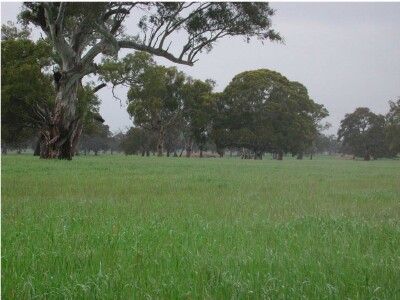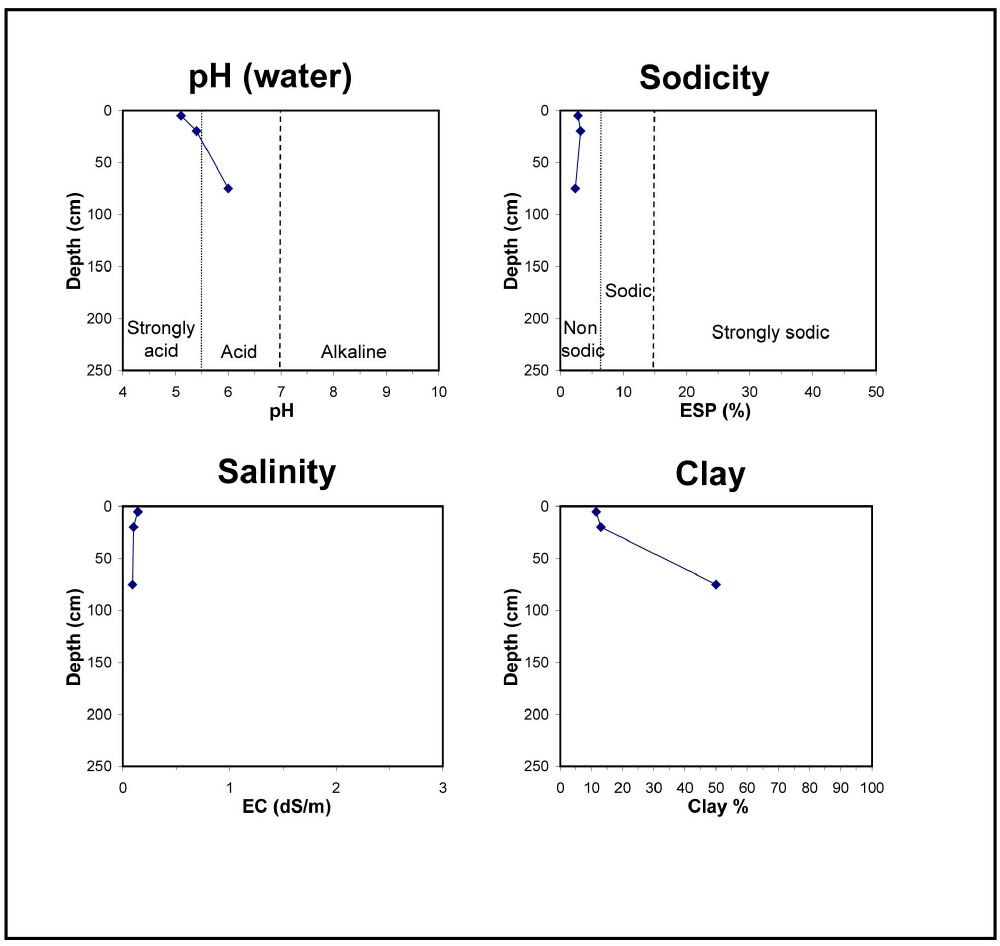GL3
| Site: GL3 | Land Unit: Dundas Redgum |
 |
|
Site Description:
| Slope: 2% | Geology: Cainozoic duricrust |
| Landform pattern: Level to gently undulating plain | Position in landscape: Flat |
| Internal drainage: Imperfectly drained |
Soil Profile Morphology
| A1 | 0-15 cm | Very dark greyish brown (10YR3/2) loam, weak subangular blocky structure, very few fine subrounded sedimentary pebbles (2-5 mm), pH 5.1. Gradual transition to: |
| A2 | 15-30 cm | Dark greyish brown (10YR4/2) sandy loam, bleached (10YR6/3) when dry, weak subangular blocky structure, small to medium ferruginised nodules are abundant (2-20 mm), pH 5.4. Clear transition to: |
| Subsoil | ||
| B2 | 30-120 cm | Reddish yellow (7.5YR6/8) fine sandy light clay, many faint orange and red mottles, moderate subangular blocky structure (2-5 mm), many angular sedimentary fragments, pH 6.0. Clear transition to: |
| B3 | 120-200 cm | Yellowish red (5YR4/6) sandy clay loam, many fine prominent red and grey mottles, moderate subangular blocky structure (5-10 mm), abundant angular sedimentary fragments, pH 5.5. |
Key profile features:
- Strongly acidic topsoil
- Strong texture contrast between topsoil and subsoil
- Bleached A2 horizon
- Mottled subsoil
- Ferric horizon



